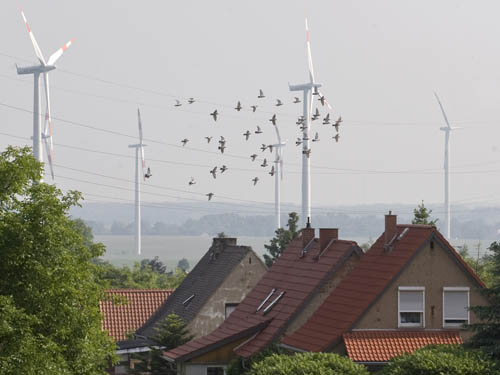EE-Monitoring
Monitoring of the expansion of renewable energies in the electricity sector from the perspective of conservation biology, and development of instruments to reduce their negative impact on nature and landscape
Project leadership: Prof. Dr. Daniela Thrän
Project management: Dr. Marcus Eichhorn
Staff responsible with research
on AP1, AP2, AP4 (work packages): Reinhard Klenke, Anushika Bose, Aleksandra Zarzycka, Teresa Nitz (mailto:teresa.nitz@ufz.de);
other contributors to to these and other work packages can be found on the main page of this project at the Department of Bioenergy.
Cooperation partners: ÖKO-LOG Freilandforschung (company for the implementation of ecological research results), NACHTaktiv – Biologen für Fledermauskunde GbR (bat biologists), Bat marking centre at Saxon State Office for Environment, Agriculture and Geology
Funded by: Federal Agency for Nature Conservation – BfN
Project duration: 01.08.2015-31.07.2018
Project description
This project investigates the impact of renewable energy development in the past 25 years on protection objects as defined by the German federal nature conservation law, which conclusions can be drawn from this, and how these conclusions can be used in order to avoid undesirable development in the future expansion of renewable energies in Germany.

The Department of Conservation Biology is mainly involved in AP 1, AP 2 and AP 4. Supplementary synergies result from the combination of this project with activities of the projects BatTrends, TURBATS and BIRDS & BLADES.
Further information can be found on the main pages of EE-Monitoring as well as the external web page as seen below.
Selected Results
- Bose A, Dürr T, Klenke RA, Henle K (2020): Predicting strike susceptibility and collision patterns of the Common Buzzard at wind turbine structures in the federal state of Brandenburg, Germany. PLOS ONE 15(1): 10.1371/journal.pone.0227698 DOI:
10.1371/journal.pone.0227698 - Bose A, Klenke RA (2019): Data from: Collision sensitive niche profile of the worst affected bird-groups at wind turbine structures in the federal state of Brandenburg, Germany. Dryad, Dataset. DOI:
10.5061/dryad.j1h2v - Bose A, Dürr T, Klenke R, Henle K (2018): Collision sensitive niche profile of the worst affected bird-groups at wind turbine structures in the Federal State of Brandenburg, Germany. Scientific Reports 8: 3777 1-13 DOI:
10.1038/s41598-018-22178-z
